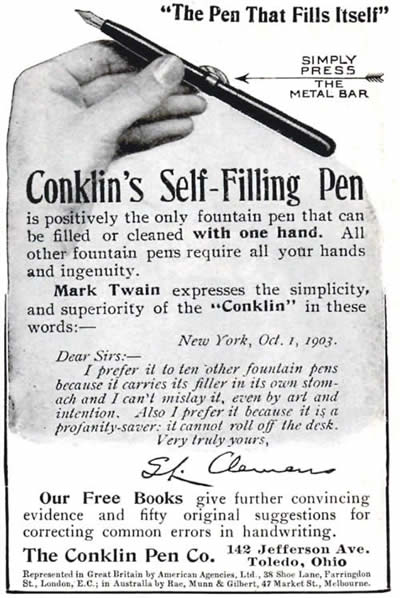The Conklin Crescent is a hump filling fountain pen with a rotating ring through the middle of the hump. It was the original hump filler and remains the best known.
Roy Conklin was granted US patent 685258 on October 29, 1901. Based on ads and news in Geyer’s Stationer, extensive marketing began in 1904. An internal rubber sac could be compressed via a pressure bar attached through a slot in the barrel to an external hump, and then released to draw in ink. There was no need to have an extra device (a dropper) to fill the pen. A locking ring is rotated into an opening in the base of the crescent-shaped hump to keep the hump extended and prevent accidental ink expulsion when not in use. By 1903 Mark Twain was a convert, no longer promoting Wirt, and now lending his name to Conklin pens. Conklin crescent pens were made in many sizes, and were also available in elegant filigree and precious metal overlays. A high quality pen made in many sizes, trim levels, filigrees, and assorted overlays, no other humped pen ever reached the popularity of this simple and effective design.


